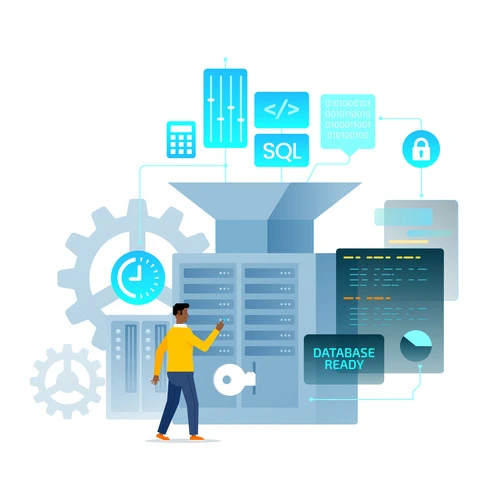Linux network logs are a core component of the IT infrastructure. Managing these logs is essential to ensure your system is in optimal health, free of troubleshooting issues, and well-protected.
This article provides clear insight into the features to look for when choosing a Linux network logs monitoring solution. Whether your goal is compliance, threat detection, or performance optimization, understanding what makes a strong log management platform can dramatically improve your system’s efficiency and resilience.
What is Linux network Logs Management?
To put it simply, log management is like keeping a detailed, automated diary of everything important that happens in your Linux operating system. This involves organising and interpreting those logs so administrators can act on them quickly. There are many types of logs –
- Syslog – The default logging mechanism for many Linux distributions.
- Kernel logs – Tracking system-level events and hardware interactions.
- Authentication logs – Monitoring login attempts and user activity.
- Network logs – Recording connections, traffic patterns, and packet-level data.
Why Log Management Matters?
As your system becomes more complex, it becomes paramount to monitor logs regularly. Doing so will help your organization maintain both security and operational efficiency.

- Centralized logging – Log monitoring solutions give you a unified view of the various Linux network logs in the infrastructure.
- Early threat detection – Continuous monitoring can help detect irregular patterns before they escalate into incidents.
- Compliance – Managing log data will ensure your organization is adhering to industry standards.
- System uptime – Detecting performance bottlenecks early keeps your system stable and responsive.
Key Features to Look for in Linux Log Management Solutions
When choosing a log monitoring solution, look out for the following seven core capabilities.
- Real-Time Monitoring – Ensure that the platform has real-time threat monitoring capabilities so you can proactively respond to any form of performance degradation.
- Advanced Log Analysis – Check whether the platform uses an analytics engine that provides visual performance insights.
- 3rd-Party Integration – This feature is a must-have, as it allows for seamless integration with APIs and SIEM platforms.
- Compliance Support – Platforms with support for automated data compliance checks are paramount for ensuring security and reliability.
- Scalability – Your data is constantly growing, so choosing a platform that enables large-scale deployments is crucial.
- Automated Incident Response – A platform with a configurable alert system will help your team stay well-informed about potential threats.
- Centralized Log Storage – A basic yet crucial feature that enables your organisation to store and manage multiple log libraries under one unified repository.
Common Use Cases of Linux network Logs Management
With a proper log management setup, your organization should be able to perform various operational and security measures. Some everyday use cases include

- Server performance analysis – Identify bottlenecks before they impact services.
- Application logging – Optimize performance and debug software errors.
- Compliance reporting – Auto-generate audit-ready documentation.
- Security monitoring – Scan and eliminate malware.
- Network monitoring – Scan for unusual traffic patterns or failed connections.
Benefits of Effective Linux network Logs Management
Linux network logs management goes a long way to ensuring your organization has a stable, functional, and reliable IT environment. When appropriately implemented, it has various benefits.
- Unlock actionable insights from log data.
- Reduced downtime as a result of proactive monitoring.
- Improved operational visibility due to the centralized ecosystem.
- Stronger cybersecurity measures with real-time threat detection.

Linux Log Management vs. Log Monitoring vs. Log Analysis
Log management, log monitoring, and log analysis mean the same thing, but from a functional perspective, they differ in specific ways.
| Function | Description | Focus Area |
| Log Management | Collects, stores, and organizes system logs | Data retention & structure |
| Log Monitoring | Observes logs in real time for anomalies | Detection & alerting |
| Log Analysis | Extracts insights and patterns from logs | Diagnostics & optimization |
Related Blog: Top 10 Features for Log Management Tools
How to Choose the Right Linux Log Management Solution
Now comes the most crucial decision you have to make: choosing a log management solution that best suits your organization. Several factors can help drive this decision.

- The cost, scalability, and vendor support for long-term value.
- The effectiveness of the security and compliance features.
- The support for multi-server ecosystems
- The support for 3rd party integrations
- The volume and complexity of your data
- The ability of the solution to monitor data in real time.
Best Practices for Implementing Linux Log Management
Want to get the most out of your newly implemented Linux log management tool? There are a few essential practices you need to implement.
- Train your IT staff to interpret and respond to logs accurately.
- Always keep your log management tool up to date.
- Periodically conduct platform audits and reviews to validate configurations.
- Automate features such as threat monitoring, archival, and log rotation.
- Standardise your log formats.

Conclusion
Efficient Linux log management is the cornerstone of system reliability and cybersecurity. By investing in solutions that provide real-time monitoring, centralized visibility, and advanced analytics, organizations can turn complex log data into meaningful intelligence. The result? Faster troubleshooting, stronger compliance, and a more resilient IT infrastructure.
If you are looking for a robust solution, Infraon’s Log Management System offers the most comprehensive suite of features for optimal log monitoring, analysis, and control.
Need more intuitive ways to modernize your IT infrastructure? Please write to us!
FAQs
Q1. What are Linux network logs used for?
With Linux logs, you can track communication between systems and detect anomalies such as unauthorized connections or packet loss.
Q2. How does Linux log monitoring improve system performance?
Log monitoring enables real-time detection of performance bottlenecks, thus ensuring faster issue resolution and proactive maintenance.
Q3. What tool is best for Linux log analysis?
Infraon’s Log Management System offers the most comprehensive suite of features for optimal log monitoring, analysis, and control.
Q4. What’s the difference between Linux event logs and system logs?
Event logs focus on specific system or application events, such as authentication or kernel events. System logs record general OS activities.
Q5. How do I secure Linux log data?
Ensure to use role-based access control, encryption, and a secure transfer protocol (such as SSH or TLS) for log transmission and storage.



















